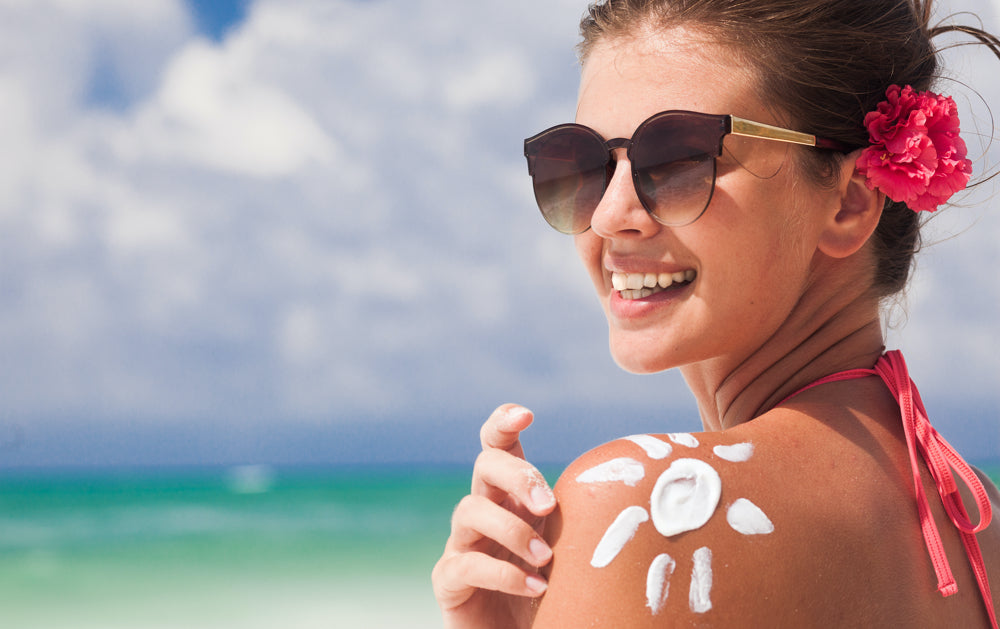Sun rays
Some important theories. UVA and UVB rays reach the Earth, which have the ability to penetrate the skin. UVA rays penetrate deeper and reach the dermis layer of the skin. UVB rays remain on the surface of the skin and affect the epidermis layer, with their help the skin tans, and they are also the culprits of skin burns, if we consider that we ourselves are not guilty of this.Sun exposure on the skin
What effect does sunlight have on our skin? First of all, sunlight has a strong influence on skin aging processes – more than 85% of visual signs of aging are influenced by the sun. UVA rays slow down skin renewal processes, slow down skin healing, promote inflammatory reactions, destroy elastin and collagen, and promote skin pigmentation and scarring processes. Another no less important fact is that constant exposure, tanning, and sunbathing without protection significantly increases the risk of cancer. Skin cells that are constantly exposed to and traumatized by sunlight mutate and become cancer cells.What is the right sun protection?
It is not enough to simply use sunscreen. It is very important that the protection is appropriate both in terms of its SPF factor and the spectrum of protection against radiation. Scientific studies prove that constant use of an SPF16 filter throughout the year reduces the risk of cancer. Scientific studies also show that proper and constant use of an SPF25 or higher factor reduces the risk of cancer by almost 100%, and also significantly slows down the skin aging processes - the formation of wrinkles, the appearance of spots, pigmentation, and a decrease in skin firmness. It is also very important that the product with sunscreen protects against both UVB and UVA rays, because both of them harm our skin. For example, if the filter protects only against UVB rays, the skin will not visually tan, we will be calm about the appropriate protection from the sun, but UVA rays, which the product will not protect against, will cause much greater invisible damage at that time without us even suspecting it.What does SPF mean?
SPF translated into Lithuanian means “sun protection factor”. How do we find out how much protection we need and how long it will work? It is not difficult, you just need to calculate the time how much skin can stay in the sun before it starts to turn red and burn. On average, the skin will start to burn after 15 minutes, which means that if the cream we use is spf15, then with proper application of the cream we can stay in the sun for 225 minutes or 3 hours and 45 minutes (15x15). This is how we calculate protection against UVB rays, but not against UVA. In order to properly protect ourselves from UVA rays, it is important that the protective product contains filters that also protect against these rays. Some of them are zinc oxide, titanium dioxide, avobenzone.Types of sunscreens
There are two different types of protective filters – mineral and synthetic. There are only two mineral or otherwise called natural filters – zinc oxide and titanium dioxide. They have advantages over synthetic ones – they protect the skin from UVA and UVB rays, are suitable for sensitive skin, and can reduce inflammatory skin reactions, especially products with zinc oxide. However, they pose one significant inconvenience – products with mineral filters are more difficult to spread on the skin and leave a white film, but recently, protective products with these substances have been improving and these inconveniences are certainly less. Synthetic filters also have a number of advantages – they spread easily on the skin, do not leave white marks, and can protect against a wide spectrum of radiation, but are considered somewhat controversial, in rare cases they can cause skin sensitivity reactions, but there is no serious real scientific basis for their negative effects on our skin or body. Filters with negative effects are prohibited from use in cosmetics.How to use sunscreen?
What does proper use mean? This means that, taking into account the SPF factor, the protection product is applied often enough, so that it is distributed evenly and the applied layer is thick enough. The best time to apply sunscreen is 20 minutes before leaving the house. Another important rule is that if you are applying other products to your skin, sunscreen should be the last product, as applying other creams on top can break down and reduce the effectiveness of the sunscreen.Solar activity
The widespread truth that we need to protect ourselves from the sun only during the summer season and only during the day is far from true. The sun's rays reach us both in winter and in summer. The sun's rays reach us even on a cloudy day. Of course, then they are less active, they penetrate the skin less, but the damage is still done. Therefore, it is very important to protect ourselves from the sun all year round, and in the sunny season to do it much more seriously. Use products with a factor higher than SPF25 and apply them to the skin often enough. However, it is very important to understand one essential thing - the fact that our skin does not tan does not mean that harmful sun rays do not reach it.I got sunburned and somehow I figured out how to soothe my skin with a moisturizing serum, which is strange, but my skin got better in a few days.


